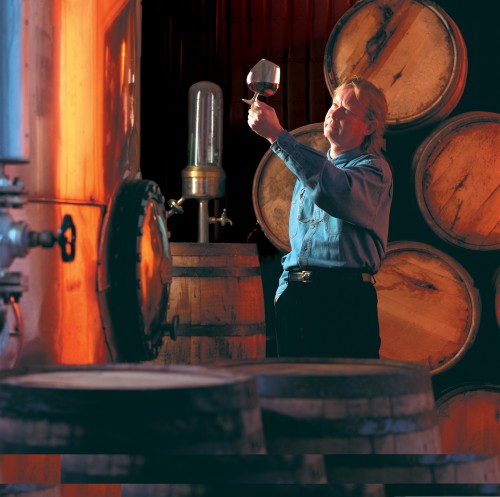
Forty Creek Whisky owner John Hall is one of the coolest dudes in Niagara. I’m not sure how I feel about him selling his brand to Campari, but reading his quotes in the wake of selling to the big drinks company it seems he will continue with his passion to make good Canadian whisky.
When I last interviewed Hall, I was immediately taken by his genuine passion for his craft.
He entered the tasting room at Kittling Ridge in his trademark suede vest, shirt and jeans. It was a look not out of place at any old Friday night rodeo.
But this was no rodeo. And John Hall is no cowboy.
He was the former owner of Kittling Ridge Estate Winery (now sold to Magnotta, while he hung on to Forty Creek), and one of the hottest whisky distillers on the planet, Forty Creek. He’s been putting Canada’s reputation as a quality whisky producer back into the hands of its rightful owners.
The story of John Hall’s Forty Creek whisky started 41 years ago when he first tried to follow his dream of becoming a master distiller in Canada.
“I had always been interested, all along,” he told me back in 2011. “In fact, when I first graduated I wanted to work for a whisky distiller. But unfortunately they didn’t hire me. So I became a winemaker instead.”
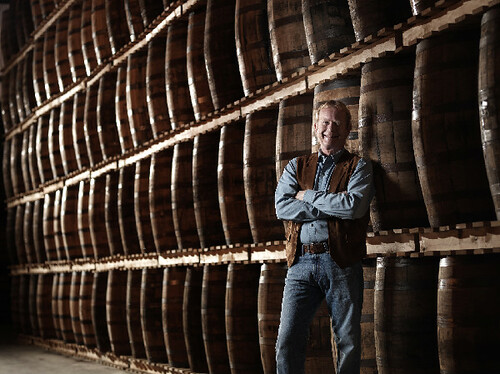
Hall’s first wine job was with Chateau Gai, back in the days before table wines had caught on in Ontario, at least the kind of wines we enjoy today. Few wanted to drink dry Chardonnays or Pinot Noirs and most the wines made were from hybrids and sweetened for consumers’ palates of the day. Sweet wines ruled the day.
Hall was instrumental in leading a management buyout of Chateau Gai, which owned four wineries across Canada. Chateau Gai was owned by the big beer company, Labatt, at the time. The buyout included partners Allen Jackson and Donald Triggs (which became Vincor, the largest wine company in Canada, now American owned).
“I decided to divest in 1992, the other two decided to carry on and purchased Brights and Inniskillin,” Hall said.
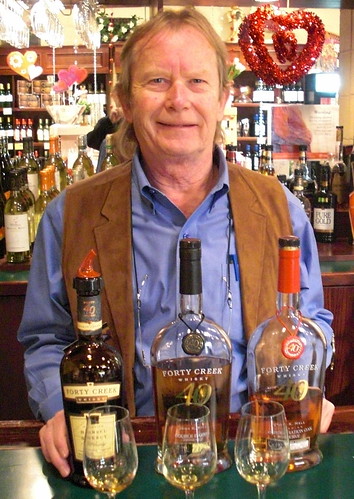 That was the same year that Hall started Kittling Ridge, making a range of wines at a unique location that was the gateway to Niagara in Grimsby, Ont., along the QEW. And the seeds were planted for his dream of making whisky.
That was the same year that Hall started Kittling Ridge, making a range of wines at a unique location that was the gateway to Niagara in Grimsby, Ont., along the QEW. And the seeds were planted for his dream of making whisky.
“In the late 80s I noticed that the Scotch guys were beginning to develop good quality single-malt Scotch whiskies. And the bourbon guys in Kentucky were starting to do small-batch bourbons. But nobody was doing anything with Canadian. It was the same-old, same-old. The same products were on the shelves that had been there 70, 80 years ago,” he explained.
Back in the 1800s there were over 250 whisky distillers in Canada. By the 1980s the industry had rationalized. “In fact, today there are only three distilleries in Ontario. And I’m one of them,” he said.
Hall said that by the 1980s most Canadian distillers were owned by large, foreign companies and they were only interested in making Scotch whisky or bourbon.
“Canadian whisky wasn’t Canadian owned anymore,” Hall said. “So I decided that what I wanted to do was resurrect, to bring back the heritage of Canadian whisky and make a hand-crafted Canadian whisky.”
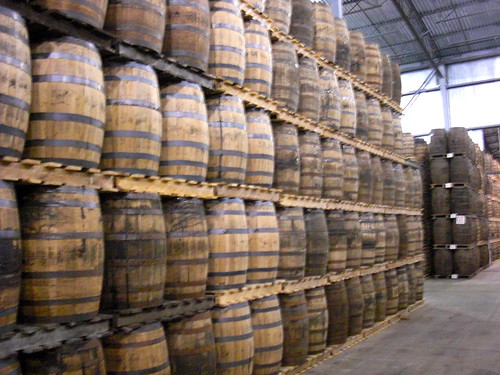
That was where Hall’s dream started taking shape. He began making his first whisky in 1992 and sold his first bottle of Forty Creek Whisky 10 years later.
“Everyone thought I was nuts back then when I told them I was going to make a Canadian whisky. Because they were seeing distillers close (between 1985 and 1995 12 distillers closed). And here I was opening one when everyone else was closing,” he said.
Hall’s gamble paid off. Forty Creek was the most successful launch of whisky brand since 1939 when “a little thing called Crown Royal” was introduced to the world.
Forty Creek whisky and its various brands have seen phenomenal growth since its launch. It actually took off quicker in the U.S. than it did in Canada but various international awards have made it to the fastest growing whisky sold in Canada.
The success has paid off for Hall who started his business in 1992 with 12 employees and today has 135 workers at the Grimsby facility. What started as a 50,000-square-foot building, has ballooned to 170,000 square feet. Not bad for a guy who couldn’t even get hired as a whisky maker.
He takes his job as a master distiller seriously, but draws liberally from his winemaking skills.
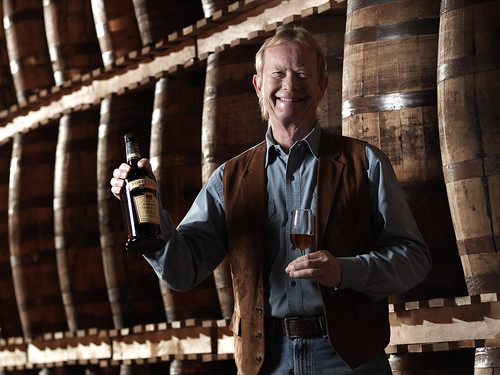
“Whisky is very much like wine to me. The complexities, the flavour notes,” he said. “What a winemaker tries to do with a wine is bring out the various nuances. It’s exactly the same with whisky. Only you’ve taken it a couple more steps. You’ve distilled it and it’s made out of grain rather than fruit. And you’re aging it for a much longer time.
“I always say, whisky makers are jealous of winemakers. A winemaker can have a wine on the market in 12 to 24 months. But with whisky … I have to wait 10 years for that,” he added.
Hall’s unique whiskies are a blend of three main ingredients — rye, corn and barley.
And like different varieties of grapes, all three grains are fermented, distilled and aged separately to highlight the best characteristics of each grain. This, explained Hall, brings out the fruitiness and spiciness of the rye, the nuttiness of the barley and the heartiness of the corn.
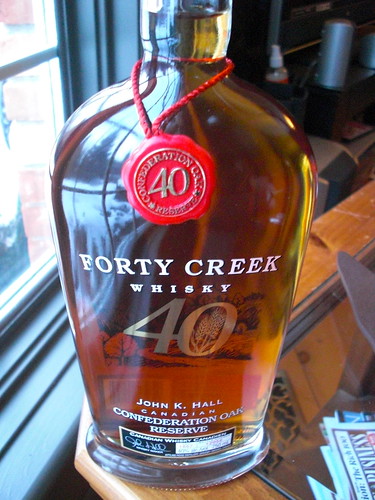 Another reason Hall’s whiskies are gaining favour come from the copper pot distillers he uses instead of the commonly used column stills that are more practical but take away from the flavours of the grains.
Another reason Hall’s whiskies are gaining favour come from the copper pot distillers he uses instead of the commonly used column stills that are more practical but take away from the flavours of the grains.
But it is in the barrel room, a massive storage area where the smell is a heady mix of vanilla, spice and alcohol, where you get a sense of Hall’s true mastery.
He uses primarily American white oak barrels and Canadian oak for his top whisky and employs different “toasting” or charring of the barrels for the different distilled grains, again, all kept separate before blending.
With rye he uses a light toast to preserve the fruitiness and spiciness, for barley, a slightly more aggressive spirit, he uses a medium toast to provide smoothness and to bring out the nuttiness of the spirit, and, lastly, with corn, he uses a heavy toast to smooth and capture the body and depth of the whisky.
One single barrel room alone holds up to 40,000 barrels. Hall has over 100,000 barrels in total that range in age from brand new to 10 years old.
Hall samples from each barrel in a regimented form of quality control as he guides the spirits to the final blend for the various whiskies including:
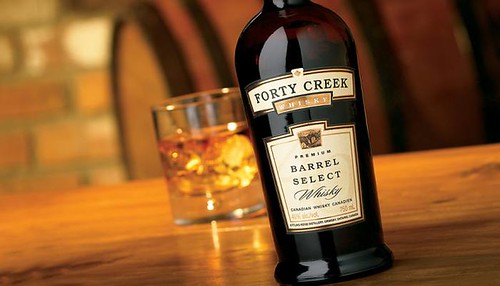
• Forty Creek Barrel Select: One of the world’s most decorated whiskies with several gold medals and a distiller of the year award for Hall from Whisky Magazine. This whisky is a blend of the three grains, blended together and further aged in sherry casks for further aging and mellowing.
• Forty Creek Double Barrel Reserve: Same blend of grains and barrels but this whisky goes through an additional three years of aging in bourbon barrels, purchased in Kentucky.
• Forty Creek Canadian Confederation Oak Reserve: This is the only whisky in the world aged in Canadian oak (planted before Confederation in 1867) grown 50 kilometres away in Brantford, Ont. Only 16,800 bottles were made of this fascinating whisky and each bottle is numbered. It was just named Canadian Whisky of the Year by Malt Advocate Magazine.
Highlights of the deal with Campari:
• Gruppo Campari has signed an agreement to acquire 100% of Forty Creek Distillery Ltd. (‘FCD’), a leading independently owned spirits company in Canada
• FCD is the owner of Forty Creek Whisky, the fastest growing brand in the attractive Canadian whisky category in Canada and well positioned in the high potential US market
• Gruppo Campari further premiumises its brand portfolio, driving richer product mix, effectively positioning itself to capitalize on the revival of brown spirits, particularly in the US
• Opportunity to improve Campari’s existing route-to-market in the brand’s key regions to efficiently achieve revenue synergies and growth acceleration, particularly in the US market
• Total purchase price for 100% of FCD is $185.6 million
• Perfect fit with Gruppo Campari’s acquisition strategy in terms of brand acquired and route-to-market
• Said John Hall, founder, and Whisky Maker of FCD: “Today’s deal represents a milestone for myself and the entire Forty Creek team. I believe this opportunity will further support Forty Creek’s vision to produce unique, quality, handcrafted, Canadian-made spirits. Campari has the global ability to take Forty Creek to the next level. Introducing customers around the world to my whisky is a dream come true. I am very excited to continue to devote my time to whisky making at Forty Creek distillery, continuing my whisky journey and exploring my passion for additional Forty Creek whisky expressions.”
• John Hall will remain Chairman of the company and Whisky Maker at Forty Creek Distillery. Over the years, John Hall has built a very successful Canadian whisky by creating a hand-crafted product, introducing new expressions, and enhancing the brand’s versatility. As a result he has effectively attracted new consumers beginning to turn to brown spirits and looking for a richer taste, thus creating renewed interest in Canadian whisky, today one of the most attractive whisky categories in North America.
•••
12 Canadian wine producers from four provinces take
their wines to ProWein, an international
trade fair in Dusseldorf, Germany

NOTE: From a news release:
Canadian wineries from Ontario, British Columbia, Quebec and Nova Scotia have joined together to exhibit at the first “Canadian Pavilion” at ProWein 2014. Over three days, 12 wineries from Canada’s wine growing regions will exhibit together within this national booth in Düsseldorf, Germany for this important international wine trade exhibition, from March 23 to 25.
The Canadian Pavilion will showcase red and white wines along with Icewine to highlight the diversity and quality of Canadian wine.
On Sunday March 23, the Province of Ontario will host a reception at the Canadian Pavilion located in Hall 1, A22 from 4-6:30 p.m. whe re trade and media visitors are invited to meet winemakers and taste exciting examples of cool climate wines including Chardonnay, Riesling, Cabernet Franc and Pinot Noir. Please contact magdalena@winesofontario.org for invitation details.
“When I came to Canada for the first time last year (July 2013), I was curious about the wines, although my expectations weren’t too high. But after spending a few days touring Ontario wine country, and attending the i4C cool climate Chardonnay conference, I was stunned. How come I hadn’t heard of what was going on here before?
“I found wines that were world class, and a talented, well travelled and engaging community of winegrowers who were doing great things. A revolution in wine quality has taken place in Ontario of late, and I was thrilled to be able to witness part of this on my trip. I’m going to be watching how things progress with great interest, and I’m planning to head back soon. I strongly encourage others to try Canadian wine when the opportunity presents itself,” said Jamie Goode, London based wine journalist.
Ontario Food Exports, of the Ontario Ministry of Agriculture and Food, has spearheaded this initiative where participating wine producers and importers will showcase wines from four of Canada’s provinces at the Canadian Pavilion.
“A primary goal of Ontario Food Exports is to help companies maximize their export opportunities. We are very excited about this inaugural Canadian wine pavilion at ProWein and we are confident it will be teaming with activity and will provide a great environment for Canadian wine producers to maximize their opportunities for international exposure and global sales during the three days of this important international wine show,” sais Diana Campbell, Ontario Food Exports.
List of participating importers and wineries:
WINEDELIGHT, a German importer of premium Canadian wines will be presenting wines from five Ontario producers:
• Creekside Estate Winery, Niagara Escarpment
• Diamond Estates Wines & Spirits (Dan Aykroyd Wines), Lakeview Cellars, Niagara Peninsula
• Flat Rock Cellars, Niagara Escarpment, Ontario
• Pillitteri Estates Winery, Niagara-on-the-Lake, Ontario
• Vineland Estates Winery, Niagara Escarpment
Kanadalachs is a Swiss importer and will present Canadian wines from:
• Burrowing Owl Estate Winery, Okanagan Valley, British Columbia
• St. Hubertus Estate Winery, Okanagan Valley, British Columbia
• Maniakadis Organic Orchard, Franklin Centre,
Quebec Devonian Coast Wineries will present wines from two of their three companies in Nova Scotia:
• Jost Vineyards, Nova Scotia
• Gaspereau Vineyards, Nova Scotia
Three Ontario producers will also represent their wines on their own behalf:
• Hidden Bench Vineyards & Winery, Niagara Escarpment
• Malivoire Wine Company, Niagara Escarpment
• Pelee Island Winery, Lake Erie North Shore






My mother has been drinking 40 creek whisky for quite some time now. She will be 94 March 4. She has her shot every day, sometimes two. For her 88th birthday, we had a forty creek label put on her cake and knitting needles; 2 of her favourite hobbies. She still talks about your generous gift back then!! Just wanted to let you know she’s still going strong, thanks to a life long love of whisky!!
I met John n the LCBO in Trenton Dec,16,2005 He was displaying his 40 creek the hard way standing and talking to customers. I was impressed that the founder would have such commitment to his product . I new it would be a hit ,so I bought a By the way I still have it . John if you want it back for a museum its yours.
Best regards Chuck